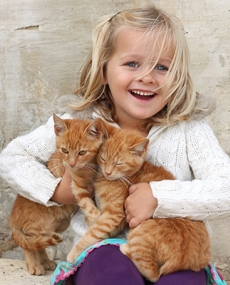Picture this scenario: You recently adopted Koko, a sassy four-year-old cat who actually rescued you at your town’s animal shelter. You’ve already taken Koko to your Shawnee veterinarian, who gave your new feline family member a complete physical exam and a clean bill of health. That’s great news, since you want Koko to enjoy lots of playtime activities with your family. To provide the energy Koko will need, your veterinarian recommended a good adult cat food with quality nutrients and vitamins. Now you must decide on the best way to feed Koko her kibbles.
Free Food on Demand
With Koko’s hearty appetite, she’d certainly love an “on demand” feeding arrangement, as she could eat her daily food allotment at her convenience. Since your schedule is unpredictable, giving Koko free food access means you don’t have to worry about getting home in time to feed her. Also, since your cat Trixie gets hungry, too, readily available food allows Trixie to snack when the mood strikes her. Good thing Trixie’s not a bully cat who would gorge herself and keep Koko away from her kibbles.
When cats were surveyed, they seemed to like the “on demand” feeding method best, as it permits them to choose their feeding times. Of course, dry kibbles are much less likely to spoil (and smell) than wet food. Also, keep in mind that “on demand” feedings can lead to weight gain if Koko or Trixie doesn’t know when to stop scarfing down the food.
Preplanned Schedules and Portions
On the other hand, if your schedule becomes more predictable, preplanned mealtimes are healthier for Koko since she can only eat a preset amount of food at each meal. You can fill her bowl and then remove uneaten food after 10 to 20 minutes; or you can put down each meal’s food and allow her to enjoy that meal at her leisure.
If your veterinarian has placed Koko on a weight control or prescription diet, she’ll need to eat controlled portions at every meal. The preplanned meal schedule is also necessary if Koko must have medications mixed with her meals. If Koko has medical conditions that are impacted by her diet, feeding her at preplanned times allows you to monitor her food consumption and make sure she’s getting enough to eat.
Remember, you’re always considering Koko’s long-term health, so make your feeding schedule decisions in that context. If you run into bumps in the road, Perimeter Veterinary Center can help you to fine-tune Koko’s feeding program so it meets her needs for years to come.


Leave a Reply
You must be logged in to post a comment.